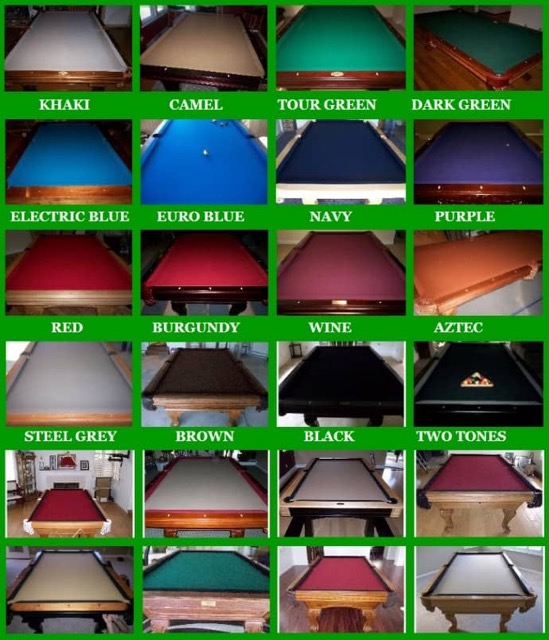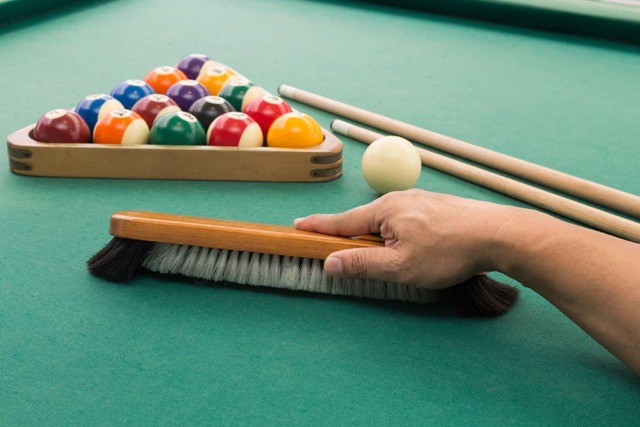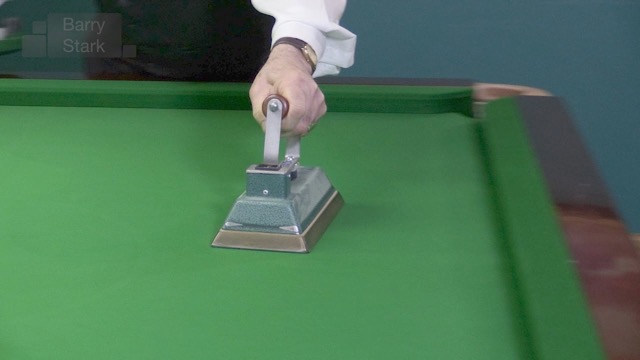Can You Iron Felt? Is It Safe? (Expert Tips & Advice)
Key Takeaways
- “Can you iron felt?” Yes, but only with the right clothes and tools. British-style wool felts can be ironed using a special low-heat pool table iron, not a household one.
- Nylon or speed cloths (common in American tables) should never be ironed. The heat can melt the fibers and permanently damage the surface.
- Brushing and vacuuming are safer, more effective ways to keep your pool table felt smooth, clean, and game-ready without risking damage.

Can You Iron Felt?
What Is Felt on a Pool Table?
The felt on a pool table is the fabric that covers the flat surface where the balls roll.
This cloth is usually made from a mix of wool and nylon, which makes it smooth, strong, and long-lasting. A good felt lets the balls roll evenly and predictably, which is important for making accurate shots.
Even though it’s built to last, the felt can still get damaged if you spill drinks on it, clean it the wrong way, or leave it in direct sunlight for too long. So taking care of it is key if you want your table to stay in good shape and play well.

Pool cue felt in different colors. Source: The Pool Table Pros
Read more: 5 Steps Before Buying Pool Tables: Pre-Purchase Checklist
Maintain A Pool Table Felt: 3 Ways
1. Brush
Brushing your pool table felt is one of the easiest and most important ways to keep it clean and playing well. Over time, chalk dust, dirt, and debris build up on the surface, and brushing helps remove all that while keeping the cloth in good shape.
If you have a British-style table with a napped cloth (meaning the fabric has a grain or direction), you’ll want to brush in straight lines, following the nap. Start at the baulk line and work your way toward the spot, brushing gently but firmly.
Don’t forget to brush under the cushions too, since chalk tends to collect there. You can gather the dust into a pile at the end of the table and vacuum it up afterward.

Brush pool table felt. Source: Blatt Billiards
For an American-style table, the cloth is usually made of nylon and doesn’t have a directional nap. That means you can brush it in any direction, making it even easier to maintain.
Either way, regular brushing keeps your felt looking fresh and ensures the balls roll smoothly every time you play.
Read more: How to Clean Pool Table Felt? Tips, Materials, and More
2. Hoover
Using a hoover (vacuum cleaner) is a great way to take your pool table felt cleaning a step further, especially after brushing. It helps pick up all the dust and chalk that brushing may have loosened or missed.
The key is to use a gentle touch. Choose a low-powered vacuum, like a small handheld one, and set it to the lowest suction setting. A strong vacuum could damage the felt, so go easy.
Use a narrow or extended nozzle to get under the cushions and into hard-to-reach spots. Just like brushing, move the hoover in long, straight lines. Don’t use circular motions or twist it around, as that can wear out the cloth.

Hoover pool table felt. Source: YouTube – Rotation Master
Done carefully, hoovering keeps your felt clean, helps it last longer, and makes sure your game stays smooth and consistent.
Read more: How To Clean a Pool Cue Shaft? 7 Steps for Pool Cue Shaft Maintenance
3. Iron
You might be wondering: can you iron felt? Or more specifically, can you iron pool table felt to keep it smooth and tidy? The answer depends on the type of table you have, and it’s not always worth the risk.
On British-style pool tables, the cloth often has a nap (a directional grain), and some professionals use a special pool table iron to keep it lying flat and neat. If done correctly, ironing can help:
- Straighten the nap after brushing and vacuuming
- Remove minor wrinkles and keep the surface smooth
But there’s a very specific way to do it:
- Use a low to medium heat setting (too hot, and you’ll burn the felt)
- Always keep the iron moving in straight lines, following the nap
- Hold the iron at a 45-degree angle to avoid heat marks
- Never let the iron sit in one spot, scorching is permanent
- And most importantly: only use a thermostatic iron made for pool tables. Regular irons aren’t safe for this job.

Iron pool table felt. Source: YouTube – Barry Stark Snooker Coach
If your table has a nylon or speed cloth (common in American-style tables), the answer is simple: No, you should not iron it.
Applying heat to nylon-based felt can:
- Melt the fibers
- Create shiny or warped spots
- Permanently damage the playing surface
So, can felt be ironed?
Technically, yes, felt can be ironed if you have the right tools and cloth type, but it’s not something most casual players should try. There are real risks, especially if you’re using a regular household iron. A slight mistake could do more harm than good.
Instead, it’s safer to stick with brushing and gentle vacuuming as your go-to maintenance methods. These will keep your table clean and smooth without risking damage.
When To Replace Pool Table Felt
Over time, even the best-maintained pool table felt will wear out. It takes a lot of friction from regular play, chalk dust, and cleaning, which eventually causes it to thin, wrinkle, or fade. So, when should you actually replace it?
Here are a few clear signs:
- Tears or Holes: Even small rips can mess with the way balls roll and will only get worse with use.
- Wrinkles That Won’t Go Away: If steaming or adjusting doesn’t fix it, the felt is probably stretched out too much to recover.
- Stains That Won’t Budge: Spills from drinks or food can leave permanent marks that no amount of cleaning can remove.
- Rough or Uneven Surface: If the felt starts to feel scratchy or inconsistent, it’s likely affecting your gameplay.
Read more: The Beginner Pool Table Tricks to Impress Your Friends
Changing the felt isn’t just about looks; it seriously impacts how the game plays. A fresh layer of felt means:
- Smoother ball movement
- Better accuracy and speed
- A cleaner, more professional-looking table
- Longer-lasting durability (especially if you upgrade to high-quality felt)
So, if your current cloth is looking worn or playing poorly, it might be the perfect time to replace it and bring your table back to life.

Dave Pearson
Dave Pearson, the world's leading pool entertainer, is renowned globally as the ultimate exhibition player.
Boasting 20 world records endorsed by the prestigious Guinness Book of World Records, Dave established a legendary history in the sport industry.
